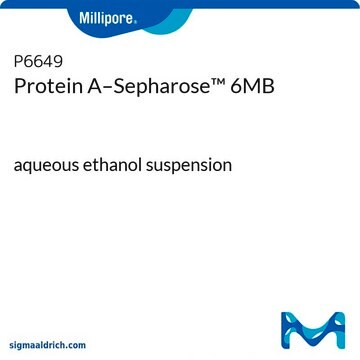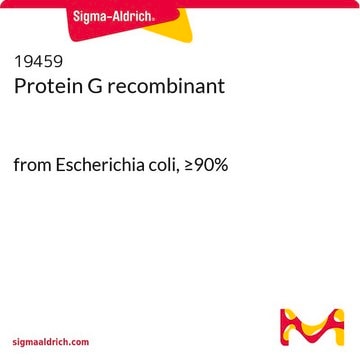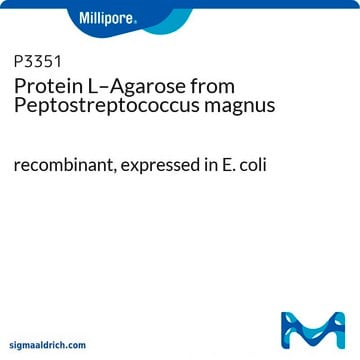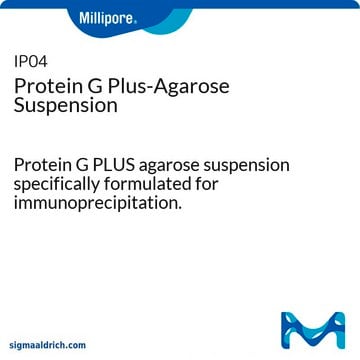P3296
Protein G Sepharose™, Fast Flow
recombinant, expressed in E. coli, aqueous ethanol suspension
Synonym(s):
Protein G-Agarose, Fast Flow from Streptococcus sp.
About This Item
Recommended Products
recombinant
expressed in E. coli
form
aqueous ethanol suspension
analyte chemical class(es)
proteins (Immunoglobulins of various mammalian species)
extent of labeling
~2 mg per mL
technique(s)
affinity chromatography: suitable
matrix
Sepharose 4B Fast Flow
matrix activation
cyanogen bromide
matrix attachment
amino
matrix spacer
1 atom
storage temp.
2-8°C
Looking for similar products? Visit Product Comparison Guide
General description
P3296-5Ml′s updated product number is GE17-0618-01
Application
Physical form
Preparation Note
Legal Information
related product
Signal Word
Warning
Hazard Statements
Precautionary Statements
Hazard Classifications
Flam. Liq. 3
Storage Class Code
3 - Flammable liquids
WGK
WGK 3
Flash Point(F)
115.0 °F - closed cup
Flash Point(C)
46.1 °C - closed cup
Certificates of Analysis (COA)
Search for Certificates of Analysis (COA) by entering the products Lot/Batch Number. Lot and Batch Numbers can be found on a product’s label following the words ‘Lot’ or ‘Batch’.
Already Own This Product?
Find documentation for the products that you have recently purchased in the Document Library.
Customers Also Viewed
Protocols
Techniques for protein antigen molecular weight determination, protein interactions, enzymatic activity, and post-translational modifications.
Techniques for protein antigen molecular weight determination, protein interactions, enzymatic activity, and post-translational modifications.
Techniques for protein antigen molecular weight determination, protein interactions, enzymatic activity, and post-translational modifications.
Techniques for protein antigen molecular weight determination, protein interactions, enzymatic activity, and post-translational modifications.
Our team of scientists has experience in all areas of research including Life Science, Material Science, Chemical Synthesis, Chromatography, Analytical and many others.
Contact Technical Service












